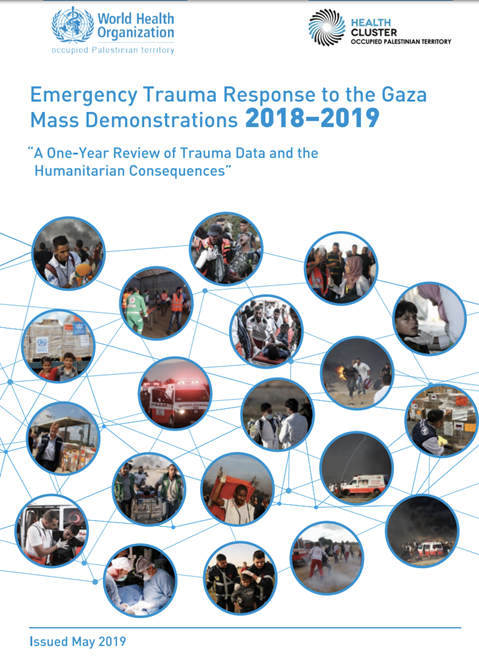Emergency Trauma Response to the Gaza Mass Demonstrations 2018-2019

Overview
In Gaza, with a population of just under 2 million – half of whom are children – and one of the highest population densities in the world, conflict-related trauma is a major burden of disease. In 2018 and 2019, the world witnessed mass demonstrations by Palestinians along the perimeter fence with Israel as part of the Great March of Return. Since the mass demonstrations began, from 30 March 2018 to 30 March 2019, the heightened conflict resulted in a cumulative total of 277 people killed and 28 014 injured as a result of clashes with Israeli security forces. The impact of trauma is not only a burden on the health sector, and affects not only the victim, but also the family and surrounding community. Trauma is a burden on the larger society and takes an economic toll. In fact, the economic burden of injury is high, in terms of both direct medical costs and indirect costs of premature death and disability. This burden is magnified when those who are injured cannot return to work or when a family member must care for the injured person. Within a place like Gaza, where unemployment reached 54% in the first quarter of 2018, poverty has soared to 53% and food security to 68%, the burden of trauma cannot be overstated.
Within this context, the specific goals of this publication are first, to conduct an analysis of 1 year of conflict related trauma in Gaza; second, to highlight the role of the Health Cluster partners, including the World Health Organization (WHO) as the cluster lead agency, in supporting the local health system; and third, to document success stories, challenges and lessons learnt. At the heart of this document is the principle that investment in and strengthening of national and local systems and structures, when properly coordinated and supported by international partners, can provide effective and sustainable trauma care that saves lives in the immediate phase and beyond.
